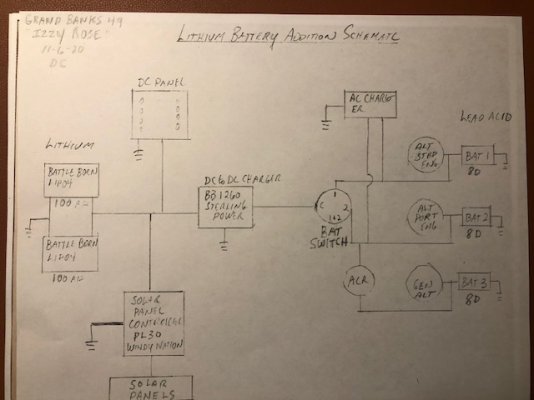Wow this thread really took off without me. I'm different than most you guys in that my boat moves very infrequently, but spends its entire life at anchor. I have 1700w of solar. I don't need to run a generator too often but i do have a diesel, as well as a portable gas unit with a built in battery + pull cord. I have twin 6bt engines, no idea on the alternators, obviously not very consequential with this much solar and so little engine time.
I have a mini dc aircon that i run at about 180 watts at night in the summer (crank it up to 275w if i wanna chill during the day). Have an old 12v marine "apartment sized fridge/freezer" that runs continuous (unless its winter), as well as a regular 120v 5cu ft chest freezer. Add in a few fans, and i'm basically pulling 20-30amps (12v) continuous overnight in the summer.
I put in 1075ah duracell gc2's 3 years ago, but it doesn't look like they can do another summer. I currently have no dedicated start batteries, i wanted the biggest house bank i could fit. So as you can see several things need to change to accomodate a lifepo4 house, but i obviously need lithium.
Not sure if I could keep 4 of the gc2's for starting. They're not made for it and are probably beat, but at the very least I would want a way to keep them topped.
I also have an antique (apparently installed in 2003!) xantrex freedom 10 inverter/charger. It's been on continuously for 5 years with no issues. But can it be used to charge lithium? A guy at xantrex said no. I also have 1 old solar controller (C40 PWM), which he also said can't do lithium. But it has manual knobs for bulk and float voltages. Do I really gotta junk that too?

